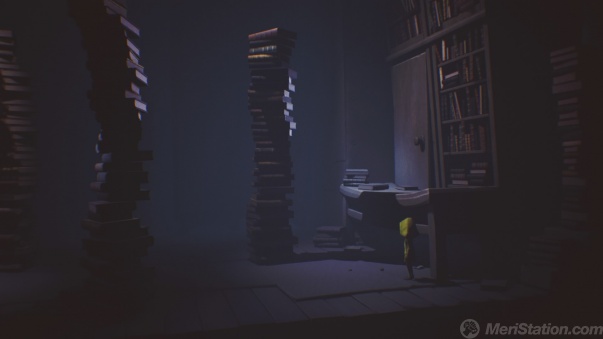The absolute darkness was the electricity at home and the light of a candle created a penumbra that generated terrifying shadows. The porcelain doll in the friend’s house that looked like he was always watching you. That bulging-eyed doll you avoided watching.
The old pendulum clock in your family’s house that made your hair stand on end every time it was a sharp hour. The long and narrow corridors. Heights.
The feeling of smallness. Each child has had a fear that has caused congestion, an irrational fear of a totally harmless object or situation that,
somehow difficult to explain without entering the field of psychoanalysis, was imagined as causing a thousand nightmares .
Little Nightmares appeals to these complex fears of childhood . The work of Tarsier Studios, who come to work together with Media Molecule in Little Big Planet,
has the objective not only to frighten us through those subjective and nebulous fears, but also to remind us of them; However, it does not stop there,
evolving its discourse little by little towards fears or concerns more typical of the adult who will probably be at the controls.
Controlling Six, a girl locked in a large submarine base to which we do not know how she has arrived but must escape from it, we immerse ourselves in a platform game and puzzles with important elements of stealth . The narrative (without dialogues or writings, told with the audio-visual and playful language) of a story that lasts approximately three and a half
hours flows without hindrance because the jumps are gimmicky but without complications, to which the situations where we must be careful with the
The noise we make is intuitive since the puzzles that we must solve to continue moving forward are based on levers, buttons, mechanisms and other complications that are solved in a simple way – that is not simple – observing the scenario.
The grace in the mechanics is that these three main elements of the playable base interact with each other constantly: situations of stealth mix
ed with narrow platforms from which we can easily fall, stealth with puzzles that we have to solve using objects that make noise or chases at a disadva
ntage while we jump and run with a timing that requires relative precision so that the protagonist does not get tired.
But, what do we escape from? The world in which Six is trapped is not his world or, at least, it is not one in which he should be; it is something that, first, is sensed as soon as we see a first image of the game: the color of his rain jacket, phosphorescent yellow,
contrasts with the sordidness and ocher and muted colors of Las Mauves . Then, it is confirmed as soon as we realize that in this place everything is giant (or that we are very small): as soon as we reach the first drawer of a piece of furniture, we will have to
climb or move chairs several times our size and the corner of a table will be a precipice to the emptiness. This is not our place, but that of its inhabitants, who will not hesitate to persecute us and hunt us as soon as they smell us, see us or hear us.
They, deformed, huge and dirty, erratic and frightening movements, are in the different rooms living: eating, sleeping, cooking …
But the game forces us to go under, on the side or just before the eyes of these giants, they will run without rest behind us while we pray to
find a hiding place or an exit that does not involve a puzzle that forces us to repeat, again, the distressing
tension to feel that our death is one step wrong. And is that the simple fact of having these beings close generates a lump in the throat,
either by their own visual design, by their moans and noises or by their way of doing everyday actions. Everything they do
is unpleasant, in part, thanks to the good design of the diegetic sound, which beyond representing our steps in the wood or the echo that an object
causes when falling from a shelf, makes us explicit the nauseating flesh that cuts so gross and clumsy a cook or the choppy, tense and difficult snoring of one of these beings sleeping.
However, it is in the very scenarios of the game (common elements such as a living room, a kitchen, a bedroom) where the sordid, the strange and the disturbing conjugate with the other narrative elements so that each moment we feel in a place in which we should not be.
In addition to the aforementioned gigantism of all the elements that surround Six and the filth of them, we must add, on the one hand, a work of lighting that emphasizes, through shadows, gloom and darkness, all the above; and on the other, the same objects of the
scenarios and their forms (curved, crooked, complicated): at the beginning of the text we talked about those elements that caused us fear of children.
Here, either in one or another room, either at the beginning of the adventure or near the end, we will see something that will consciously or unconsciously remind us of those childhood fears.


